How to Safely Use a Squat Rack
New to using a squat rack? Learn how to lift safely with proper setup, form, and spotting tips. Whether you're training at home or in the gym, this guide helps you avoid injuries and lift with confidence.
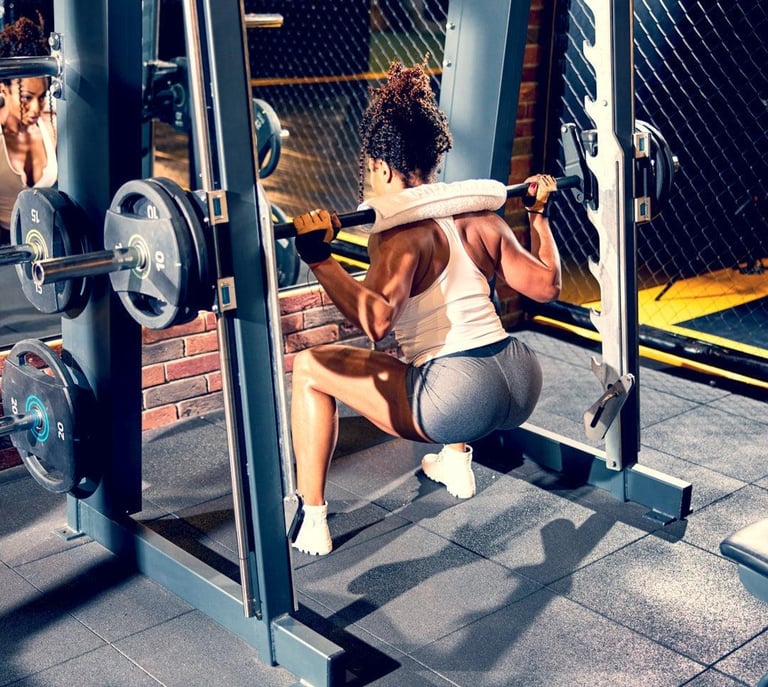

How to Safely Use a Squat Rack
Before diving into the mechanics of using a squat rack, it's important to understand what it is and its purpose. A squat rack, also known as a power rack or cage, is a versatile piece of gym equipment designed to safely hold a barbell at various heights. It allows you to perform a range of exercises, such as squats, bench presses, and overhead presses, with added stability and security.
The Anatomy of a Squat Rack
A squat rack is composed of several critical components that contribute to its functionality. The vertical posts are the backbone, providing the structural support needed for lifting heavy weights. Adjustable safety bars or pins are essential features, allowing customization to suit different exercises and user heights. Additionally, the rack includes J-hooks or bar catches, which hold the barbell securely at your desired starting height.
Safety Features
Safety is paramount when using a squat rack. Most racks come equipped with safety bars or pins that act as a fail-safe, catching the barbell if you fail to complete a lift. This feature is crucial for preventing injuries, especially during heavy lifts. Some advanced racks also include band pegs and plate storage options, which enhance functionality and organization.
Versatility and Exercises
While the squat rack is named for squats, its versatility extends to a wide range of exercises. You can perform bench presses, overhead presses, and even incorporate resistance bands for added challenge. Understanding the full potential of your squat rack will enable you to create a comprehensive workout routine that targets multiple muscle groups effectively.
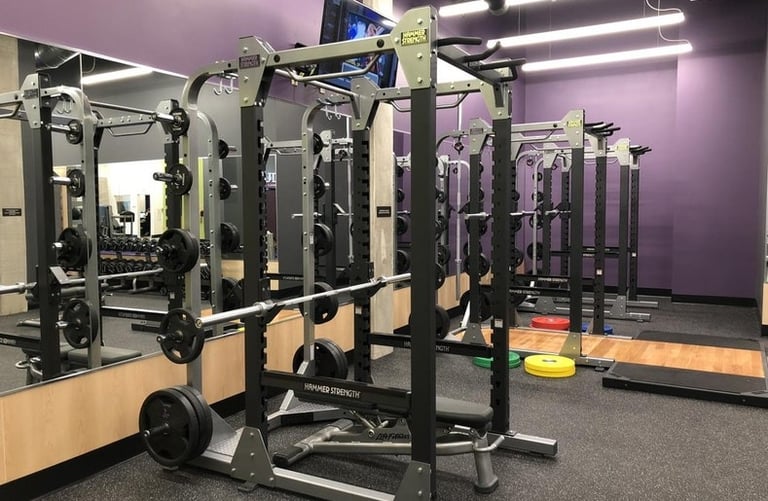

Types of Squat Racks
There are several types of squat racks available, each catering to different needs and preferences:
Power Rack
The power rack is the most robust and versatile type, featuring four vertical posts and adjustable safety bars. It's ideal for heavy lifting and provides maximum safety. Power racks are suitable for both home and commercial gyms due to their stability and range of exercises they support. They often come with additional features, such as pull-up bars and dip stations, increasing their utility.
Half Rack
A more compact version of the power rack, the half rack is suitable for smaller spaces and offers less support but still allows for a variety of exercises. Half racks are often favored by home gym owners who need to maximize space without sacrificing functionality. They maintain the key features of safety and versatility, though they may offer fewer customization options than full power racks.
Squat Stand
The most basic and affordable option, squat stands consist of two vertical posts. They are portable and great for beginners but offer less safety compared to other racks. Squat stands are ideal for those who prioritize mobility and simplicity, making them a popular choice for outdoor workouts or temporary gym setups. However, users should exercise caution and prioritize safety when using squat stands for heavy lifts.
Wall-Mounted Racks
Wall-mounted racks are a space-saving solution for those with limited room. These racks are fixed to a wall, providing stability while occupying minimal floor space. They are an excellent choice for small home gyms, offering the functionality of a full rack with a smaller footprint. Wall-mounted racks often include foldable features, allowing you to retract them when not in use.
Portable Racks
For fitness enthusiasts who need a mobile solution, portable racks offer flexibility and convenience. These racks are lightweight and easy to disassemble, making them perfect for travel or outdoor workouts. While they may not support the same weight capacity as more permanent racks, they provide a versatile option for maintaining a fitness routine on the go.
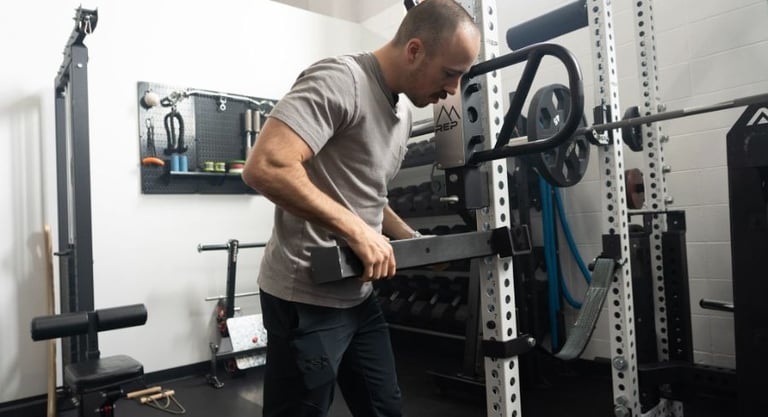

Setting Up the Squat Rack
Proper setup is crucial for safety and effectiveness when using a squat rack. Here's how to set it up:
Adjusting the Height
Determine Your Starting Position: The barbell should be positioned at about chest height. This allows you to easily get under the bar and lift it off the rack. Ensuring the bar is at the correct height prevents unnecessary strain on your shoulders and back when lifting.
Set the Safety Bars: Safety bars should be set just below the lowest point of your squat. In case you can't complete a lift, they'll catch the weight, preventing injury. This step is critical for exercises like squats, where the potential for dropping the bar is higher.
Fine-Tune for Different Exercises: Depending on the exercise, you may need to adjust the height of both the bar and safety bars. For instance, bench presses require a different setup compared to squats or overhead presses. Experiment with different heights to find what works best for each exercise.
Loading the Barbell
Choose the Right Weight: Start with a weight you're comfortable lifting. Gradually increase as you become more confident and stronger. It's important to focus on form and control, rather than attempting to lift too heavy too soon, which can lead to injury.
Secure the Plates: Use collars to secure the weight plates on the barbell. This prevents them from sliding off during your workout, ensuring stability and safety. Always double-check that the collars are tightly fastened before lifting.
Balance the Load: Ensure that the weight plates are evenly distributed on both sides of the barbell. An imbalanced load can lead to uneven lifts and increase the risk of injury. Take the time to double-check that both sides have the same amount of weight.
Checking for Stability
Inspect the Rack: Before starting your workout, make sure the squat rack is stable and all bolts are tightened. A wobbly rack can be dangerous, especially when lifting heavy weights. Regularly inspect the condition of the rack and make adjustments as needed.
Ensure the Floor is Level: The squat rack should be placed on a level surface to prevent any tipping or shifting during your workout. Check the area for any uneven surfaces or debris that could affect stability.
Test the Setup: Before loading the barbell with heavy weights, test the setup with a lighter load to ensure everything is secure. This allows you to identify and address any potential issues before they become safety hazards.
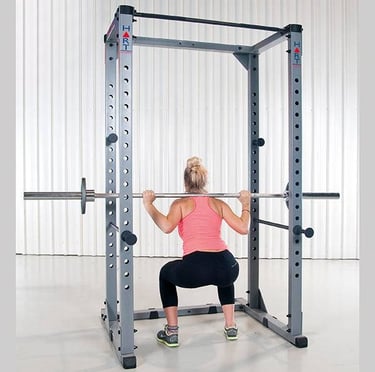

Performing the Squat
Once your squat rack is properly set up, it's time to perform the squat. Follow these steps for proper form:
Step-by-Step Guide
Position Yourself: Stand with feet shoulder-width apart, toes slightly pointed out. Position the barbell across your upper back and shoulders, not your neck. Proper positioning ensures even weight distribution and minimizes strain on your neck and spine.
Grip the Bar: Use an overhand grip, hands slightly wider than shoulder-width apart. Engage your core and keep your chest up. A firm grip and engaged core provide stability and control throughout the movement.
Unrack the Bar: Stand up to lift the bar off the rack, taking a step back to clear the rack's supports. Ensure your stance is stable before proceeding with the squat. Confidence in this step is crucial for maintaining balance and avoiding unnecessary movements.
Squat Down: Bend at the hips and knees, lowering your body as if sitting back into a chair. Keep your back straight and knees in line with your toes. Focus on controlled movements, maintaining a steady descent to avoid jerking motions that can lead to injury.
Return to Starting Position: Push through your heels to stand back up, extending your hips and knees. Keep your core engaged throughout the movement. Properly engaging your core provides support and helps maintain balance as you complete the lift.
Common Mistakes to Avoid
Rounding the Back: Avoid rounding your back during the squat, as this can lead to injury. Keep your spine neutral and focus on maintaining a straight back throughout the movement.
Knees Caving In: Ensure your knees track over your toes as you squat. Allowing your knees to cave inward can strain the joints and lead to injury. Practice proper form and consider using resistance bands to help correct this issue.
Lifting Heels Off the Ground: Keep your heels planted firmly on the ground to ensure stability. Lifting your heels can shift the weight forward, putting unnecessary stress on your knees. Focus on maintaining a flat-footed stance.
Safety Tips
Always Warm Up: Before lifting to prevent strains and injuries, engage in a dynamic warm-up. This increases blood flow and prepares your muscles for the workout ahead. Incorporate exercises like leg swings and hip circles to activate your lower body.
Use a Spotter or Safety Bars: For added security, especially with heavy weights, have a spotter or ensure safety bars are correctly positioned. A spotter can provide assistance and motivation, while safety bars act as a fail-safe.
Focus on Form Over Weight: Lifting too heavy without proper technique can lead to injury. Prioritize mastering your form before increasing weight to ensure safe and effective workouts. Regularly assess your technique and make adjustments as needed.
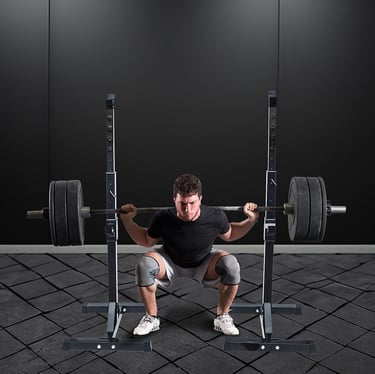

Additional Exercises with a Squat Rack
A squat rack isn't just for squats. It can be used for a variety of exercises to target different muscle groups:
Bench Press
Set up a bench inside the rack and use the barbell for bench presses. Ensure the safety bars are set to catch the bar if necessary. This exercise targets the chest, shoulders, and triceps, making it a staple in any strength training routine.
Overhead Press
Adjust the barbell to shoulder height and perform overhead presses to work on your shoulders and upper body. The overhead press is excellent for building shoulder strength and stability, as well as engaging the core for balance.
Pull-Ups and Chin-Ups
Many squat racks include a pull-up bar, allowing you to perform pull-ups and chin-ups. These exercises are effective for building upper body strength, particularly in the back, biceps, and shoulders.
Deadlifts
While not directly involving the squat rack, you can use the rack to store your barbell and weight plates for deadlifts. Deadlifts are a fundamental exercise for building overall body strength, engaging the legs, back, and core.
Barbell Rows
Barbell rows can be performed using the squat rack to stabilize the barbell. This exercise targets the back muscles and is essential for developing a strong and balanced upper body.
Maintaining Your Squat Rack
To ensure longevity and safety, regular maintenance of your squat rack is essential:
Inspect for Wear and Tear
Regularly check for any signs of damage or wear, especially on the safety bars and posts. Look for any cracks, bends, or rust that could compromise the integrity of the rack. Address any issues immediately to prevent accidents.
Clean the Equipment
Wipe down the rack and barbell after use to prevent rust and maintain hygiene. Use a clean cloth and a mild cleaning solution to remove sweat and debris. Regular cleaning will extend the life of your equipment and keep it looking new.
Tighten Bolts and Screws
Ensure all parts of the rack are securely fastened to prevent wobbling or instability. Periodically check the bolts and screws, tightening them as needed to maintain the rack's structural integrity. This simple step can prevent accidents and prolong the life of your equipment.
Lubricate Moving Parts
Apply lubricant to any moving parts, such as the safety pins and J-hooks, to ensure smooth operation. Lubrication reduces friction and wear, enhancing the performance and lifespan of your squat rack.
Store Accessories Properly
Keep accessories like collars, bands, and attachments organized and stored properly. This prevents loss and damage, ensuring you always have the necessary tools for your workout.
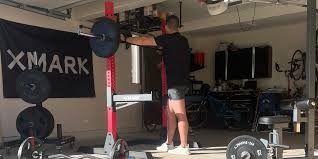

Choosing the Best Squat Rack for Home Use
If you're considering adding a squat rack to your home gym, there are several factors to consider:
Space and Size
Measure your available space to ensure the rack will fit comfortably. Consider ceiling height as well, especially for overhead exercises. Ensure there is adequate room around the rack for safe movement and additional equipment.
Budget and Features
Squat racks vary widely in price. Determine your budget and prioritize features like safety bars, storage options, and build quality. Consider whether you need additional features like pull-up bars or dip stations, which can add value to your investment.
Reviews and Ratings
Research and read reviews to find the best-rated power racks that suit your needs. Look for racks with good customer feedback and reliability. Pay attention to comments regarding durability, ease of assembly, and overall satisfaction.
Brand Reputation
Choose a reputable brand known for quality and customer service. Brands with a strong reputation often offer better warranties and support, ensuring a positive purchasing experience. Consider reaching out to manufacturers for any questions or concerns.
Warranty and Customer Support
Ensure the squat rack comes with a warranty and good customer support. A comprehensive warranty provides peace of mind, while reliable customer support can assist with any issues or queries you may have post-purchase.
Conclusion
Using a squat rack safely is all about preparation and proper form. By understanding the equipment, setting it up correctly, and following safe lifting practices, you can effectively incorporate a squat rack into your workout routine. Whether you're using it at home or in a gym, a squat rack is a valuable tool for building strength and achieving your fitness goals. Stay safe, lift smart, and enjoy the benefits of a well-rounded exercise regimen. Consistency and mindfulness in your workouts will lead to improved strength, better performance, and a healthier lifestyle.
